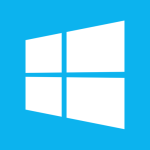Category: Work
Default Display name on new users
 1. Start ADSI Edit and Connect to Naming Context “Configuration Container,” and click OK
1. Start ADSI Edit and Connect to Naming Context “Configuration Container,” and click OK
2. Expand the Configuration Container, and expand the Configuration
3. Expand the cn=DisplaySpecifiers node, and then double-click CN=409.NOTE: 409 is the Locale ID for U.S. English. If you are in a multi-lingual environment, you may need to make changes to the other codes. Most of the Asian codes are already set. The International Telecommunication Union (ITU) and International Organization for Standardization (ISO) define the code pages. For more information, visit the following ITU and ISO Web page: http://www.microsoft.com/globaldev/reference/lcid-all.mspx
4. In the right-hand pane, open the properties for “CN=user-Display”
5. Scroll to the createDialog optional property
6. Set the attribute to %<sn>.%<givenName>. Make sure that you click Set
7. Click OK to close the dialog box
Disable EDNSProbes
use the following command to disable EDNS:
dnscmd /config /enableednsprobes 0
Cause:
This issue may occur if a firewall blocks UDP packets larger than 512 bytes.
With Extension Mechanisms for DNS (EDNS0) as defined in RFC 2671, “Extension Mechanisms for DNS (EDNS0),” DNS requestors can advertise UDP packet size and transfer packets larger than 512 bytes. By default, some firewalls have security features turned on that block UDP packets that are larger than 512 bytes. As a result, DNS queries may fail.
Correct time configuration in a Domain
Commands to configure PDC
w32tm.exe /config /syncfromflags:manual /manualpeerlist:INTERNALOREXTERNALNTPSERVER.FQDN
w32tm.exe /config /update
Commands to configure other DCs and standalone Clients
w32tm.exe /config /syncfromflags:domhier
w32tm.exe /config /update
Force Domain Controller replication immediately
Repadmin /syncall /force /APed
Administrate Active Directory remotely from your client
 Use the RSAT Tools to administrate Active Directory remotely from your client:
Use the RSAT Tools to administrate Active Directory remotely from your client:
for Windows 8.1: http://www.microsoft.com/en-us/download/details.aspx?id=28972
Promote Domain Controller with Powershell
 Domain Controller promotion can also be done with PowerShell script:
Domain Controller promotion can also be done with PowerShell script:
#
# PowerShell script for Domain Controller Deployment
#
Import-Module ServerManager
Add-WindowsFeature AD-Domain-Services
Import-Module ADDSDeployment
Install-ADDSDomainController `
-NoGlobalCatalog:$false `
-CreateDnsDelegation:$false `
-CriticalReplicationOnly:$false `
-DatabasePath “C:\Windows\NTDS” `
-DomainName “YOUDomainFQDN” `
-InstallDns:$true `
-LogPath “C:\Windows\NTDS” `
-NoRebootOnCompletion:$false `
-ReplicationSourceDC “CHANGEMEIMAHOST.FQDN” `
-SiteName “CHANGEMEIMASITE” `
-SysvolPath “C:\Windows\SYSVOL” `
-Force:$true
Discover FSMO Roles with PowerShell
Import-Module ActiveDirectory
Get-ADForest <domainnameFQDN> | Format-Table SchemaMaster,DomainNamingMaster
Get-ADDomain <domainnameFQDN> | Format-Table PDCEmulator,RIDMaster,InfrastructureMaster
 https://www.ssllabs.com/ssltest/index.html
https://www.ssllabs.com/ssltest/index.html
